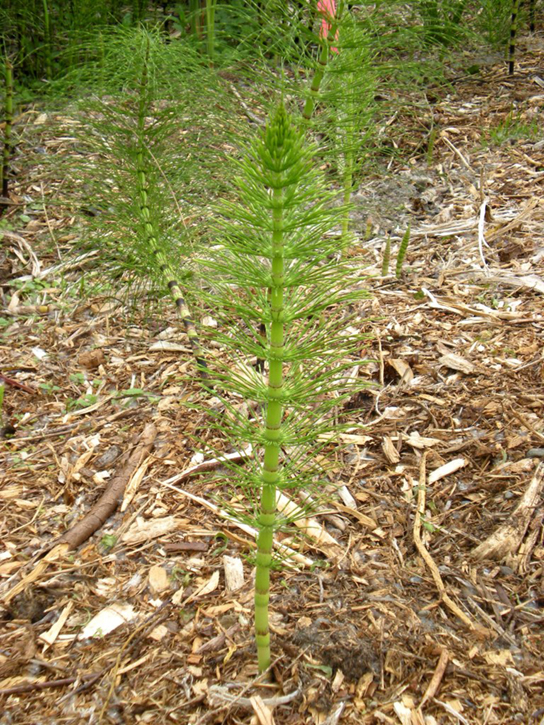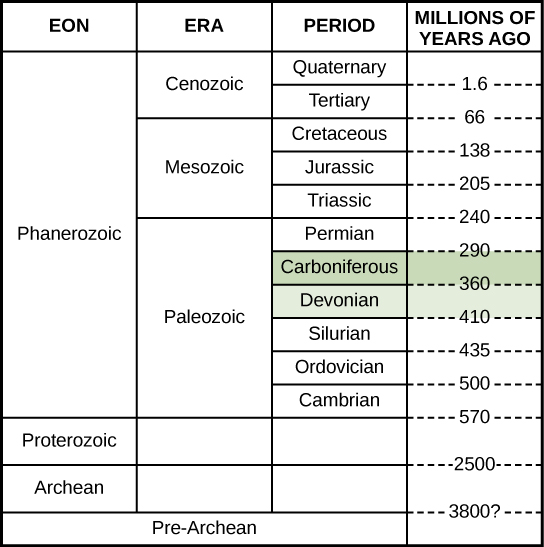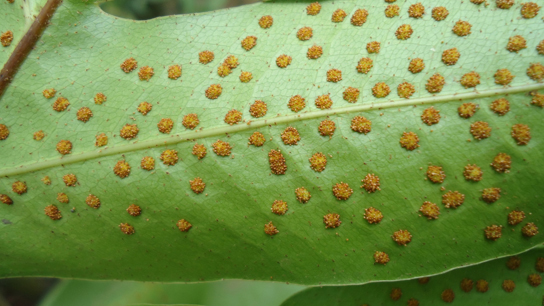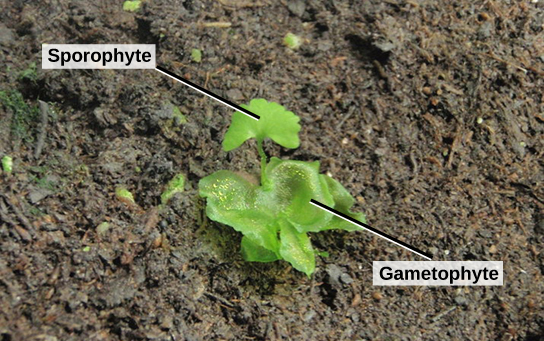| << Chapter < Page | Chapter >> Page > |

Ferns are considered the most advanced seedless vascular plants and display characteristics commonly observed in seed plants. Ferns form branching roots and large leaves known as fronds. With their large fronds, ferns are the most readily recognizable seedless vascular plants ( [link] ). About 12,000 species of ferns live in environments ranging from tropics to temperate forests. Although some species survive in dry environments, most ferns are restricted to moist and shaded places. They made their appearance in the fossil record during the Devonian period (416–359 million years ago) and expanded during the Carboniferous period, 359–299 million years ago ( [link] ).
The dominant stage of the lifecycle of a fern is the sporophyte, which consists of large compound leaves called fronds. Fronds fulfill a double role; they are photosynthetic organs that also carry reproductive organs. The stem may be buried underground as a rhizome, from which adventitious roots grow to absorb water and nutrients from the soil; or, they may grow above ground as a trunk in tree ferns ( [link] ). Adventitious organs are those that grow in unusual places, such as roots growing from the side of a stem.


The lifecycle of a fern is depicted in [link] . The sporophyte is the most conspicuous stage of the lifecycle. On the underside of its mature fronds, sori (singular, sorus) form as small clusters where sporangia develop ( [link] ).

Which of the following statements about the fern life cycle is false?
Go to this website to see an animation of the lifecycle of a fern and to test your knowledge.

Inside the sori, spores are produced by meiosis and released into the air. Those that land on a suitable substrate germinate and form a heart-shaped gametophyte, which is attached to the ground by thin filamentous rhizoids ( [link] ).

The inconspicuous gametophyte harbors both male and female gametes (the sperm and the egg). Flagellated sperm released from the antheridium swim on a wet surface to the archegonium, where the egg is fertilized. The newly formed zygote grows into a sporophyte that emerges from the gametophyte and grows by mitosis into the next generation sporophyte.

Notification Switch
Would you like to follow the 'Bi 101 for lbcc ilearn campus' conversation and receive update notifications?